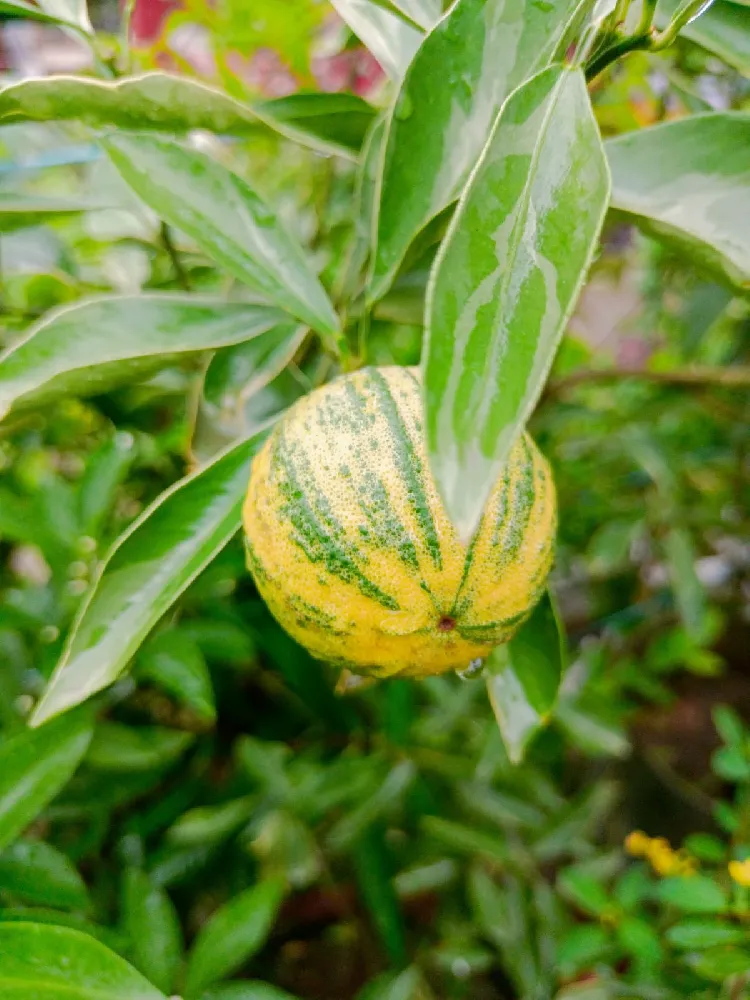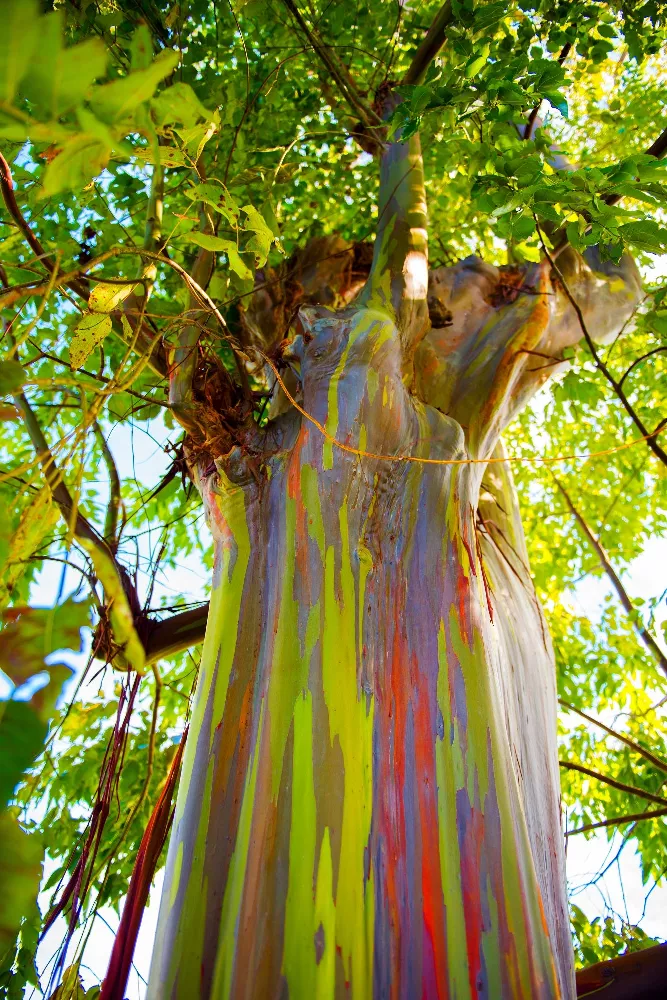- Home >
- Ornamental Plants >
- Bottlebrush Trees
Bottlebrush Trees for Sale - Buying & Growing Guide
- Ships in 1-2 days
- 1-Year Warranty Eligible
- Pots or accessories are not included unless specified in the product options.
Shipping Details:
Products shipped through FastGrowingTrees.com. Once your order is shipped, you’ll receive an email with a tracking number and estimated delivery date. Most orders will ship immediately.
The bottlebrush tree (callistemon) is a native of Australia. Like many Australian plants, it is an easy-grow outdoor plant in the correct climate, but it can also be a star in your container garden. It gets its name from the spiky blossoms, which are shaped like the brush you might use for cleaning bottles. The resemblance ends there, however, because the colorful spikes make it an excellent candidate as a feature plant in your low water garden. Here are just a few of the reasons to purchase a bottlebrush plant:
- Easy to grow
- Can be an outdoor warm climate plant or a cold climate indoor container plant
- Excellent addition to a bee or butterfly garden
Plant Care
Sunlight

Can grow in a range from full sun to partial shade. They need at least four hours of direct, unfiltered sunlight per day.
Watering
Regular watering schedule for the first six months. Once established, rainwater should be sufficient.
Fertilizing

Should not need any extra fertilizer unless your entire lawn and garden have problems and needs regular fertilizing.
Planting and Care
Planting instructions
Bottlebrush plants can be grown from seed or from cuttings. The seeds can be harvested from mature plants at the end of the growing season, then planted in a prepared seed bed (indoors or out) in the spring. Bottlebrush is not picky about soil, but prefers moderate to light watering. Cuttings gleaned from spring or fall pruning can either be placed in a container of water or planted directly in soil. When propagating in water, change the water every other day to ensure that it is fresh. If planting in soil, pack the soil around it tightly so that it remains upright and water sufficiently to keep the soil moist, but not soggy. Like many plants originating from Australia, overwatering can be a serious problem for a bottlebrush plant.
Watering and nutrients
If your bottlebrush is established out of doors and is growing well, you will probably not need to water it, or if you do, it will be only during the driest months. Container plants will certainly need to be watered, but it is best to err on the side of too little and to use a potting mix that will easily drain. After water comes nourishment in the order of life necessities. If you are growing your bottlebrush outside, then you will probably want to use a slow release fertilizer. For indoor plants, a liquid fertilizer is best. Bottlebrush plants do not require a lot of nutrition in their soil, but they can react adversely to too much fertilizer. Use about half the amount recommended on the package, and observe your plant for adverse changes. Yellowing leaves could indicate a need to reduce the amount of fertilizer.
Pollination
The ends of the bottlebrush blossom are dusted with pollen. It is much loved by a variety of pollinator insects and birds. These hardy plants can be self-pollinating. However, if you have more than one type of bottlebrush growing in your garden, insects and birds can help them cross pollinate. For this reason, if you want an exact replica of the parent plant, it is best to grow it from cuttings. But if you are open to seeing what combinations might develop, then natural cross pollination is a good idea.
Pruning
Your growing situation will dictate how much pruning your bottlebrush will need. In excellent conditions, a bottlebrush tree can grow up to thirty feet tall. This will create a lovely architecture tree for your backyard or other outdoor area. Not everyone has that kind of space, however. Regular pruning will help keep your bottlebrush at an ideal height and shape for your garden. For shape, prune it in the spring before it begins to put out flower buds. In late summer or early autumn, or anytime you see a problem, your bottlebrush can be pruned for health or size.
Pests and diseases
Bottlebrush plants are susceptible to a variety of pests and diseases. Even though they are generally an easy-care plant, there are some things to watch for:
- Root Rot. This is a common problem for novice gardeners who worry about remembering to water. However, your bottlebrush plant will love a little neglect in this regard. Once root rot has set in, it is almost impossible to combat. The solution is to plant your bottlebrush where it will have good drainage and to water lightly.
- Powdery Mildew. This is a condition that loves excess moisture and goes hand in hand with overwatering. The solution is to treat the plant with a fungicide. Prevention is a simple matter of avoiding contact with infected plants, water sparingly, and place the plant in full sunlight as often as possible.
- Twig Gall. Again, overwatering encourages this condition. The solution is to cut away infected parts, reduce watering, and make sure your plant is getting plenty of sunlight.
- Verticillium Wilt. Yes, overwatering can contribute to this one, too. Unfortunately, it is also difficult to diagnose since it resembles several other conditions. If you suspect it, cut off a twig. An infected plant will have dark rings of color in the cross-section. There is no cure for the condition, but you can try to build up the plant’s resistance through appropriate fertilization and watering. If the plant cannot be saved, be sure to dispose of it away from other plants, and do not replant susceptible species in that same location.
Temperature
As a native of Australia, this plant likes to be kept warm. In mild climates, it can live all year round, though if you live in an environment where winters are cold, then you will need to grow the bottlebrush tree in a container so that it can be moved inside during chilly months.
Light
The bottlebrush tree thrives in full sun and needs plenty of direct sunlight to produce the striking brush-like flowers. If you are planting this tree directly into the ground in your garden, ensure it is in an area that will get at least six hours of sun a day. Watch out for neighboring plants which might grow bigger than the bottlebrush tree, resulting in it being put in the shade by the bigger plant.
For encroaching plants, cut them back to enable the bottlebrush tree to have full access to daylight, or dig up your bottlebrush tree and replant it in a more suitable location. Bottlebrush trees in containers will need to be positioned in a sunny spot and can be moved around if necessary to give them the best chance of good health and flower production.
Propagation
If you want to propagate your bottlebrush tree, you can do so from seeds or from stem cuttings (Royal Horticultural Society). Both options are easy and very rewarding to do.
To collect seeds from your bottlebrush, you will need to locate the woody fruit produced by each blossom on the plant. You will be able to find these small fruits growing along the flower stems in clusters. Remove them from your plant, unopened, and store them in a cool, dry place inside a paper bag. Then, wait for the fruits to open, revealing hundreds of tiny seeds from each fruit. Sow the seeds during spring in moist soil and wait for seedlings to appear, transferring them to slightly larger pots when mature enough and continuing care as usual for young shrubs.
Due to the common cross-pollination of bottlebrush trees, growing the plant from seed does not guarantee that the new plant will be the same variety as the mother plant. If you are keen to ensure your new plants are a direct copy of the parent plant, you will need to propagate using stem cuttings instead of seeds.
Propagation by stem cuttings can be done during summer with semi-mature woody stems. Make your cut with clean shears at a 45-degree angle to create the most surface area from which roots can form. Your cutting will need to be around six inches in length, with all of the lower leaves removed. Any flowers or flower buds will also need to be snipped from the cutting. You can dip the raw end of the cutting in rooting hormone to encourage roots to form and increase your chances of successful propagation, but it isn’t entirely essential and can be skipped if you wish.
Stand the cutting in either a jar half filled with water or in a small pot filled with soil, ensuring that the soil is packed tightly enough around the stem to prevent it from falling over. If you are using soil to propagate your stem, keep it moist but not wet, and, ideally, cover it with a plastic bag to help increase humidity.
If you are using water to propagate your stem, change it at least every other day to keep it fresh. Place the stem cuttings in a warm place, ideally with bottom heat, and no direct sunlight. In eight to twelve weeks, your stems should have rooted. If you are propagating in water, then the development of stems is easy to witness.
If the stems are in the soil, you can check to see if roots have formed by gently tugging on the stem and seeing if it offers any resistance. Stems which will easily be pulled from the soil do not have any roots, while those that hold onto the soil are showing evidence of root development. Once roots are present, you can remove the plastic covering and move the pot outside to a warm and sunny spot. Ensure the young plant is well-protected from strong winds and continue care as normal, either planting directly into the ground or into a bigger pot when the plant is strong enough.
Planting and Care
1. Planting
This is a large landscape tree and as such, requires a bit of planning before planting. First, measure the area where you would like to plant your hedge or row. You will need the length of the area of planting to estimate the number of trees you need.
When planting, dig a hole for each tree that is three times as wide as the root ball but just as deep. You don’t need to add anything to the planting hole. Place the tree, fill in around the tree with the same soil you took out when initially digging the hole. Finally, tamp down as you fill to cut back on any air pockets from forming, water the tree, then mulch to conserve moisture.
2. Watering
For the first two weeks, water your new tree every other day by holding a hose around it and counting to 20. If you don’t have a hose, 2 large watering cans full of water will do (smaller trees may only need a light soaking so a single can may suffice).
During the second two weeks, switch to watering every three days with the same method mentioned above. After the first month, water once a week unless it is dry and hot (no rain and temperatures above 80 degrees). If it is hot and dry, water twice a week. After the first six months, the trees will be established and won’t need any extra water. Your natural rainfall should be sufficient at this stage.
3. Watering
For the first two weeks, water your new tree every other day by holding a hose around it and counting to 20. If you don’t have a hose, 2 large watering cans full of water will do (smaller trees may only need a light soaking so a single can may suffice).
During the second two weeks, switch to watering every three days with the same method mentioned above. After the first month, water once a week unless it is dry and hot (no rain and temperatures above 80 degrees). If it is hot and dry, water twice a week. After the first six months, the trees will be established and won’t need any extra water. Your natural rainfall should be sufficient at this stage.
4. Watering
For the first two weeks, water your new tree every other day by holding a hose around it and counting to 20. If you don’t have a hose, 2 large watering cans full of water will do (smaller trees may only need a light soaking so a single can may suffice).
During the second two weeks, switch to watering every three days with the same method mentioned above. After the first month, water once a week unless it is dry and hot (no rain and temperatures above 80 degrees). If it is hot and dry, water twice a week. After the first six months, the trees will be established and won’t need any extra water. Your natural rainfall should be sufficient at this stage.
FGT Tip
Possibly the best feature of this evergreen is that deer don’t favor the taste. If you live in an area with heavy deer pressure, spray your Thuja Green Giants every 3 to 6 months with deer repellent. That’s all the protection you need.
FAQs
When will a bottlebrush bloom in the northern hemisphere?
In areas where it can be planted out of doors, such as California, a bottlebrush might begin blooming as early as late December and bloom through late spring. These are the same months in which it will bloom in Australia, where it takes advantage of combined warmth and moisture during summer and fall.
What is the lowest tolerable temperature for a bottlebrush?
When planted in a sheltered area with plenty of direct sunlight, a bottlebrush is hardy down to 45 degrees Fahrenheit.
How much sunlight does a bottlebrush require?
Your bottlebrush plant is a sun lover. It likes six to eight hours of direct sunlight per day. Try to avoid planting it where it will be shaded a large part of the time.
Should I fertilize my bottlebrush in winter?
No, you should not fertilize your bottlebrush in winter. Like many plants, winter is a rest period for your bottlebrush and it will not use the nutrients in the soil.
In which USDA growing zones will bottlebrush flourish outdoors?
Hardiness depends on which bottlebrush variety you grow. The lowest zone a bottlebrush can grow in is 7, but that is only true for some cultivars. Most need to grow in zone 9 or warmer.
Compare Similar Products
Customer Reviews
 bottlebrush is struggling
bottlebrush is strugglingA lot of the leaves turned brown. I am trying to protect it from harsh sunlight and am watering it more than usual because of the very hot weather we are having. I a watching for any new growth and for any more dead leaves. Do you have any suggestions? I sent you a picture. Did you get it?












